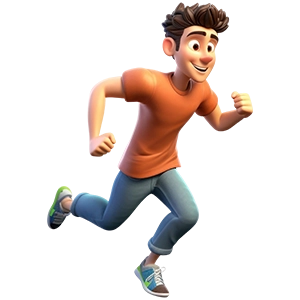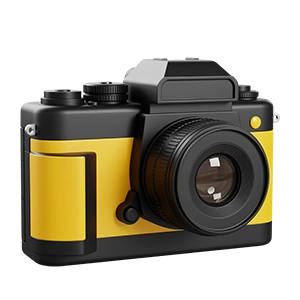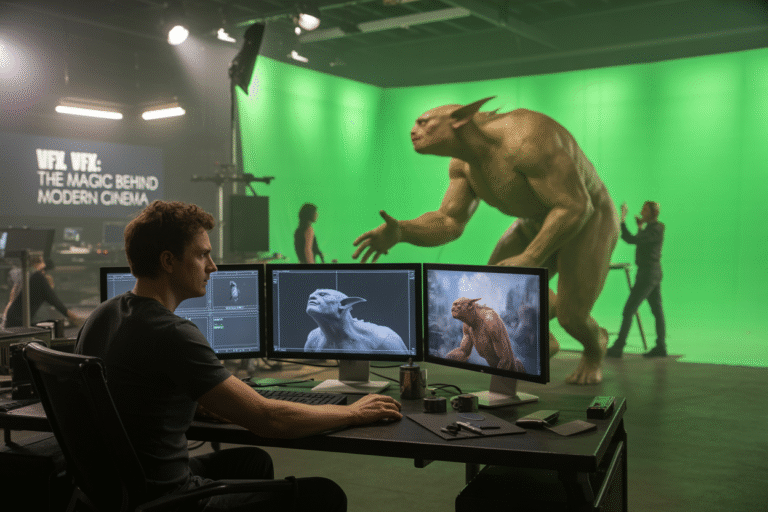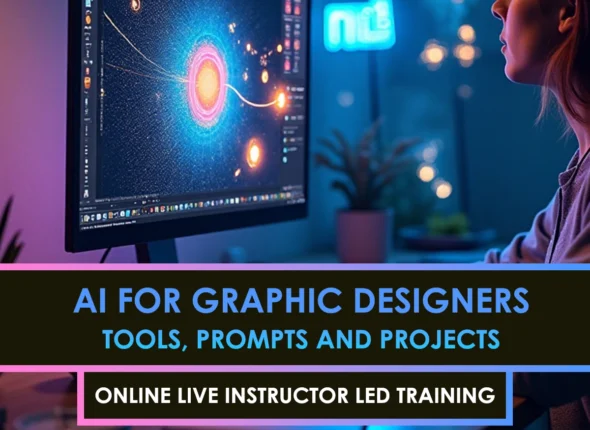A Beginner’s Guide to Visual Effects in Films
Ever paused a Marvel movie and thought, “How the heck did they make that happen?” You’re not alone. The jaw-dropping scenes that seem impossible, heroes flying through alien skies or buildings crumbling into dust, are VFX magic at work.
In this guide, I’ll walk you through everything you need to know about visual effects in films, from the basics to how they’re revolutionizing storytelling on screen.
The line between what’s real and what’s created digitally gets blurrier every year. Twenty years ago, studios needed millions for basic effects. Today, indie filmmakers with laptops are making movie magic that would’ve been impossible before.
But here’s what most people don’t realize about great VFX: the best effects are the ones you never even notice.
Defining VFX: Understanding the Basics
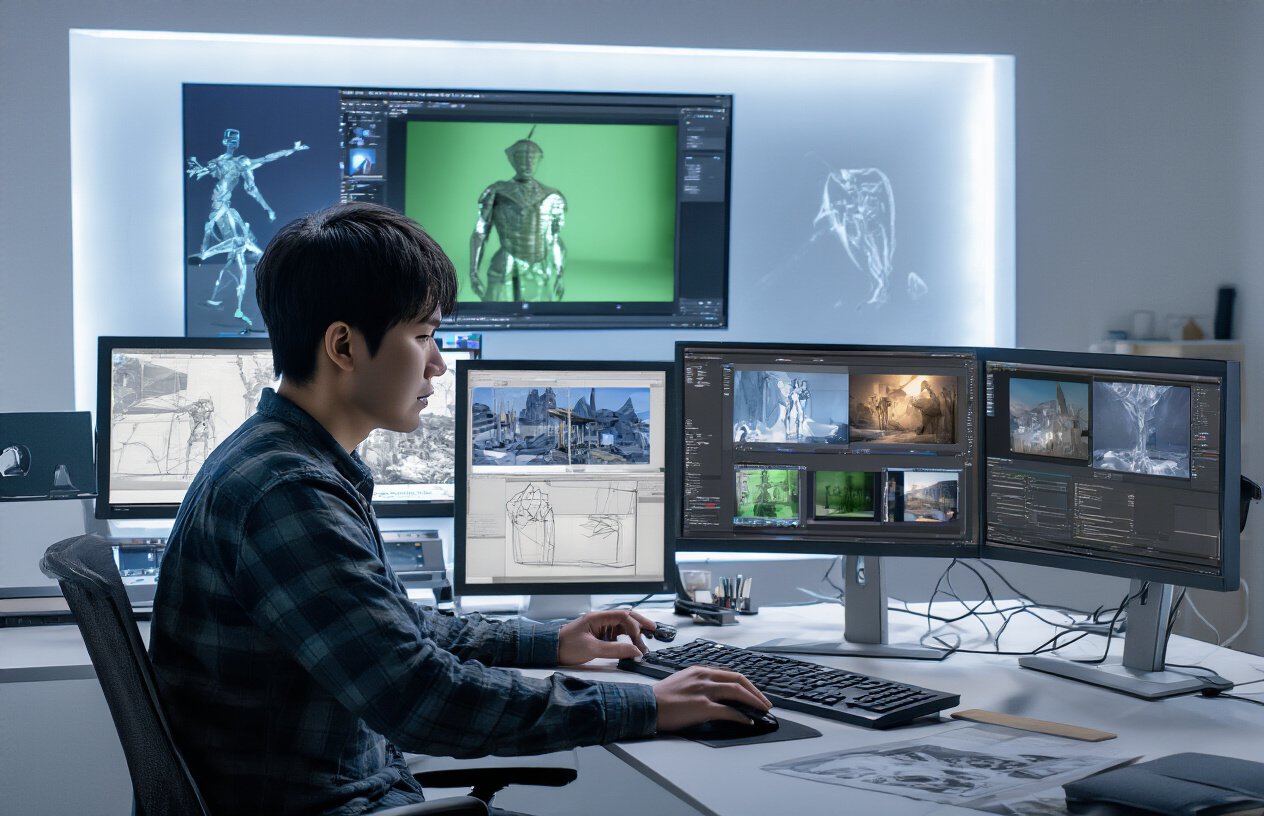
What VFX Means in Filmmaking
VFX (Visual Effects) is the art of creating or manipulating imagery outside the context of a live-action shot. Sounds fancy, right? But it’s something you’ve seen thousands of times without even realizing it.
Think about that impossible camera move in your favorite action film, or that alien creature that looked so realistic you could’ve sworn it was actually on set. That’s VFX in action.
At its core, VFX is digital sleight of hand. It’s taking something that doesn’t exist in reality and making it look like it was captured by a camera. Or taking something that does exist and making it look different.
The magic happens when the audience can’t tell what’s real and what’s not. That’s when VFX artists pop a bottle of champagne (or more likely, energy drinks).
The Difference Between VFX and Special Effects
People mix these up all the time, and honestly, who can blame them?
Special effects (SFX) happen right there on set, in front of the camera. Think explosions, rain machines, makeup prosthetics, stuff that’s physically present during filming.
VFX, on the other hand, happens after filming wraps. It’s created digitally in post-production.
Here’s a quick breakdown:
| Special Effects (SFX) | Visual Effects (VFX) |
|---|---|
| Practical, physical effects | Digital, computer-generated effects |
| Created during filming | Created after filming |
| Examples: pyrotechnics, animatronics, and practical makeup | Examples: CGI creatures, digital environments, compositing |
That awesome car explosion in a ’70s movie? Special effect. The entire planet of Pandora in Avatar? Visual effect.
Brief History of VFX Evolution in Cinema
VFX isn’t some new kid on the block. It’s been around since the earliest days of film.
Georges Méliès was pulling VFX tricks back in 1902 with “A Trip to the Moon.” Yeah, that iconic shot of the moon with a rocket in its eye? Primitive VFX, baby.
Fast forward to the 70s and 80s, and we got revolutionary stuff like the motion control cameras in Star Wars and the first CGI character in Young Sherlock Holmes.
Then Jurassic Park (1993) blew everyone’s minds with dinosaurs so realistic, filmmakers collectively thought, “Wait, we can do THAT now?”
The 2000s brought us motion capture performances like Gollum in The Lord of the Rings, and today? We’re in a world where entire movies can exist in the digital realm.
Why VFX Matters in Modern Filmmaking
VFX isn’t just about making things look cool (though it definitely does that too).
Modern filmmaking leans on VFX because it makes the impossible possible. Want to destroy New York City without actually, you know, destroying New York City? VFX has your back.
It’s also a massive money-saver in many cases. Building a futuristic city set might cost millions, but creating it digitally could be more cost-effective.
But the real power of VFX is storytelling. It lets filmmakers bring audiences anywhere their imagination can dream up. From the depths of space to the inside of the human body, VFX breaks down the barriers between what we can imagine and what we can see.
Core VFX Techniques Every Beginner Should Know
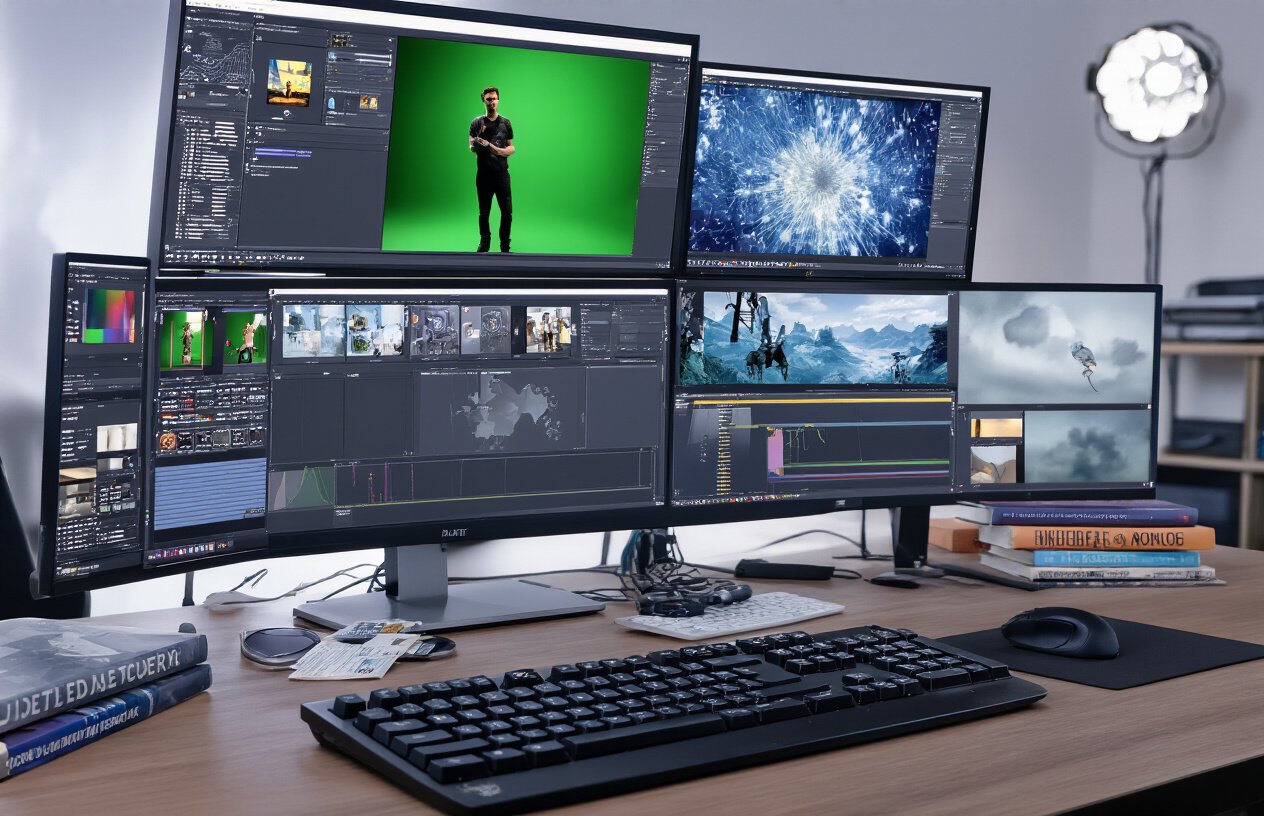
A. Green screen and blue screen technology explained
Ever wonder how your favorite superhero flies through the city skyline? That’s green screen magic at work.
Green screens (and their blue cousins) are probably the most recognizable VFX technique out there. The concept is dead simple: actors perform in front of a bright, solid-colored background. Then, in post-production, that color gets digitally removed and replaced with whatever the filmmaker wants.
Why green and blue? These colors contrast most with human skin tones, making the separation process (called “keying”) cleaner. Green is typically brighter and requires less lighting, while blue produces less spill on actors and works better with blonde hair or green costumes.
The secret to good green screen work isn’t fancy equipment; it’s even lighting. Shadows and wrinkles on your screen are your worst enemies. They create inconsistent coloring that makes clean keying nearly impossible.
B. CGI (Computer Generated Imagery) fundamentals
CGI has revolutionized filmmaking. Those dinosaurs in Jurassic Park? CGI. The entirety of Toy Story? CGI all the way.
At its core, CGI involves creating or manipulating images using computers. The process typically follows these steps:
- Modeling – Creating 3D objects and characters
- Texturing – Adding surface details and materials
- Rigging – Building a digital skeleton for movement
- Animation – Bringing the models to life
- Lighting – Adding realistic light sources
- Rendering – Processing the final images
The magic happens when 3D artists create assets in software like Maya, Blender, or 3ds Max. These programs let artists sculpt digital models with incredible detail, down to individual pores on a character’s face.
C. Motion capture techniques
Motion capture (or mocap) bridges the gap between live action and animation. It records an actor’s movements and transfers them to a digital character.
You’ve seen those actors in funny-looking suits covered in little balls? Those markers reflect infrared light to specialized cameras that track their position in 3D space. This data gets cleaned up and mapped onto digital characters, think Gollum from The Lord of the Rings or the Na’vi in Avatar.
Facial mocap is even wilder—it captures every subtle expression using helmet-mounted cameras or marker dots on an actor’s face. This technology has gotten so good that the line between real and digital performances gets blurrier every year.
D. Compositing and matte painting
Compositing is basically the art of seamlessly combining multiple images into one convincing shot. It’s the digital equivalent of a sandwich, layering elements like foregrounds, backgrounds, CGI elements, and practical effects.
Matte painting creates environments that don’t exist or would be impossible to film. Originally done on glass, today’s digital matte paintings create everything from fantasy landscapes to futuristic cities. They’re essentially high-end digital backdrops that extend sets or replace sections of live footage.
The best compositing is invisible; you never even notice it happened.
E. Particle systems and simulations
Want to create realistic fire, water, smoke, or crowds? That’s where particle systems come in.
Particle systems generate and control thousands (sometimes millions) of individual elements that collectively create complex visual effects. Each particle follows rules defined by the artist, creating natural-looking phenomena.
Physics simulations take this further by applying real-world physical properties to digital elements. This is how VFX artists create believable destruction sequences, fluid dynamics, or cloth movement.
The computing power needed for these simulations is enormous. A single splash of water might require calculating the movement of millions of particles interacting with each other and their environment. But the results? Worth it when you see that perfect explosion or storm sequence that looks completely real.
The VFX Production Pipeline
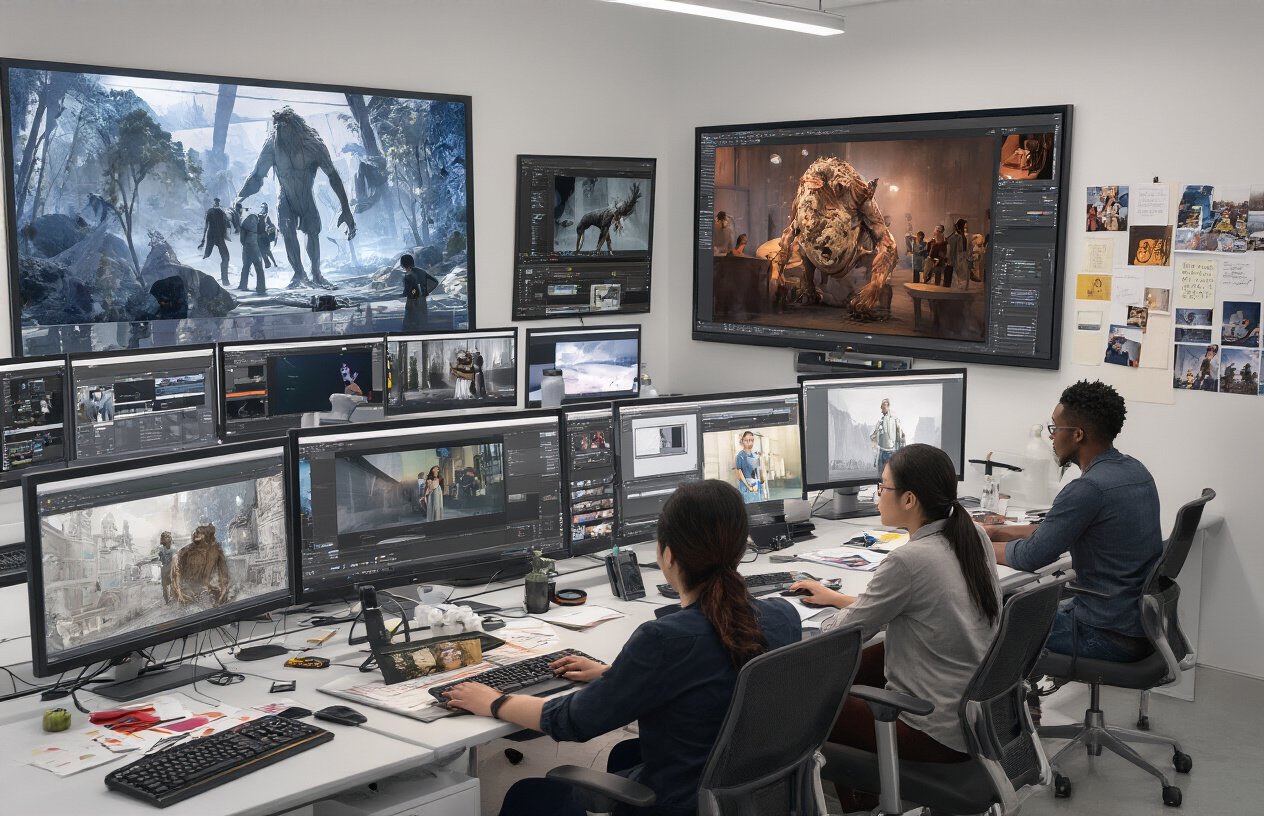
Pre-visualization and concept development
Ever watch a movie with jaw-dropping effects and wondered how they pulled it off? The magic starts long before a camera rolls. Pre-viz (as the cool kids call it) is where VFX artists sketch out the wildest ideas into something the team can build.
Think of it as the blueprint phase. Artists create storyboards, concept art, and rough 3D animations to map out complex sequences. Directors and VFX supervisors huddle around these early visuals, pointing and debating: “The dragon should swoop lower here” or “The explosion needs more oomph.”
Pre-viz isn’t just about making pretty pictures. It’s problem-solving on steroids. The team asks: Can we shoot this for real? Do we need a green screen? How many digital elements? What’s our budget limit? These early decisions save millions in production costs.
The real game-changer in modern pre-viz? Real-time engines like Unreal. Directors can now walk through virtual sets before building anything physical. That’s not just efficient, it’s revolutionary.
On-set data collection and reference shooting
The VFX magic doesn’t happen in isolation. Teams need to gather mountains of real-world data during filming.
When you see a set covered in little silver balls and weird patterns, that’s not decoration, it’s essential reference material. These tracking markers help VFX artists calculate camera movements with pinpoint accuracy.
Light probes capture how light behaves on set. HDRI (High Dynamic Range Imaging) cameras snap 360° photos that record lighting conditions from every angle. Without these references, your fancy CGI dragon would look like it’s floating in space instead of casting proper shadows.
The data collection process can seem obsessive. Teams photograph everything: textures, materials, and lighting setups. They measure distances between objects, lens specifications, and camera heights. They even record the weather conditions.
Why all this fuss? Because the human eye can spot fakery in milliseconds. The more real-world data the VFX team has, the more convincing their digital elements will be.
Post-production workflow
This is where the real grunt work begins.
First comes rotoscoping, the painstaking process of separating foreground from background, frame by frame. Then there’s matchmoving, where artists track the camera movement so digital elements stay locked in place.
The asset creation phase follows, building everything from spaceships to monsters. Modelers create the shapes, texture artists add surface details, and riggers build the digital skeletons that make movement possible.
Animation breathes life into these assets. Whether it’s subtle facial expressions or epic battle sequences, animators work their magic one frame at a time.
Simulation teams handle physics-based effects like water, fire, and destruction. Ever noticed how fabric moves realistically in movies? That’s their handiwork.
Lighting artists make sure digital elements match the set lighting perfectly, while compositors blend everything, adding final touches like lens flares or atmospheric effects.
Final integration with other film elements
The last stage is where separate pieces become a seamless whole.
Color grading ensures the VFX shots match the film’s overall look. Sound designers create audio that sells the visual illusion, the whoosh of a superhero’s cape, or the rumble of an alien spacecraft.
The VFX supervisor works closely with the director during final reviews, sometimes making last-minute tweaks to perfect the shots. It’s a delicate dance between technical limitations and creative vision.
What most viewers don’t realize is how many departments touch a single VFX shot before it hits the screen. Dozens of specialists might work on just a few seconds of footage.
The real art lies in making effects invisible. The greatest VFX triumph isn’t when audiences say “cool effect,” it’s when they’re so immersed in the story they forget they’re watching something impossible.
Essential VFX Software and Tools
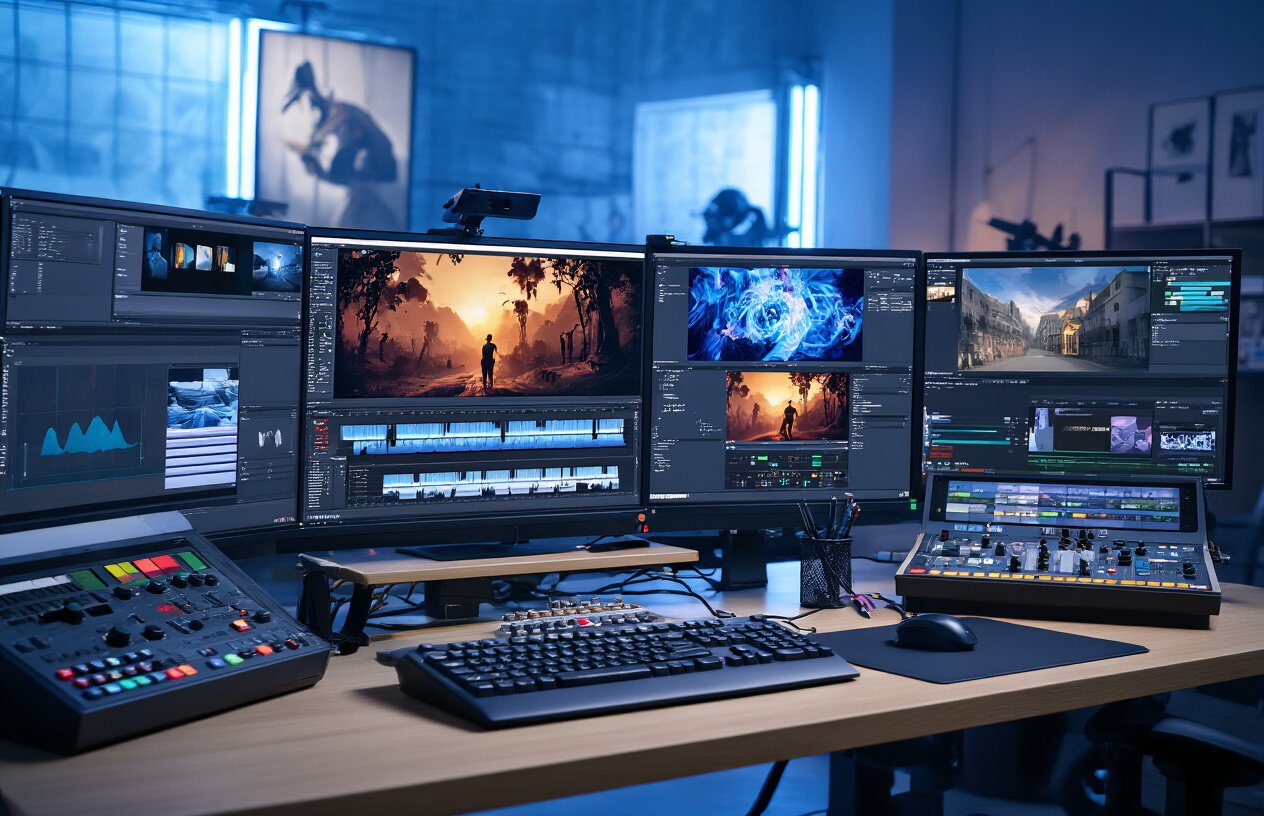
Industry-standard software packages
The big players in VFX aren’t just fancy names; they’re the powerhouse tools that brought your favorite movie moments to life.
Autodesk Maya sits at the top of the food chain for 3D modeling, animation, and effects. When you see those mind-blowing creatures or impossible environments in blockbusters, Maya was probably behind them. It’s comprehensive but comes with a learning curve steeper than the cliff from Mission: Impossible.
Nuke by Foundry dominates compositing, that’s where all the separate visual elements get combined into seamless final shots. VFX artists swear by its node-based workflow that gives them precise control over every pixel.
Houdini from SideFX is the wizard for creating realistic simulations. Fire, water, destruction sequences? That’s Houdini territory. It’s where physics meets art.
Adobe After Effects rounds out the professional toolkit, handling motion graphics and 2D visual effects that integrate perfectly with live footage.
Beginner-friendly VFX applications
Not ready to drop thousands on software or tackle professional-grade learning curves? No problem.
Blender is the superhero of free VFX software. This open-source 3D creation suite keeps getting better with each update. It now rivals commercial options with capabilities spanning modeling, animation, simulation, rendering, and compositing. The community behind it is massive and supportive.
HitFilm Express combines editing and VFX in one free package. Perfect for creating lightsaber effects or adding explosion elements to your backyard action sequence.
DaVinci Resolve offers a free version with surprisingly robust compositing and VFX tools. What started as color-grading software has evolved into a complete post-production solution.
Natron is an open-source alternative to Nuke with a similar node-based interface, making it great training wheels before jumping to the pro version.
Hardware requirements for VFX work
VFX isn’t just demanding on your skills, it’s brutal on your hardware too.
Processor power matters enormously. Most professional work requires at minimum an 8-core CPU, with many studios running dual Xeon setups or AMD Threadrippers.
RAM is never enough in VFX. Start with 32GB as your absolute minimum for serious work. Professional systems often pack 64GB to 128GB.
GPU choices can make or break your workflow. NVIDIA’s RTX series cards with their dedicated cores for ray-tracing have become industry standards. The more VRAM, the better—8GB is entry-level, while pros use cards with 24GB+.
Storage solutions need to be fast and massive. A typical workflow involves:
- Fast SSD (preferably NVMe) for your OS and applications
- Separate SSD for active projects
- Large capacity HDDs for archives
Monitors should offer accurate color reproduction, IPS panels with at least 99% sRGB coverage are standard, with many professionals use calibrated displays.
The sweet spot? Build incrementally. Start with a solid foundation that meets minimum requirements, then upgrade components as your skills and projects demand more power.
Breaking Down Famous VFX Scenes
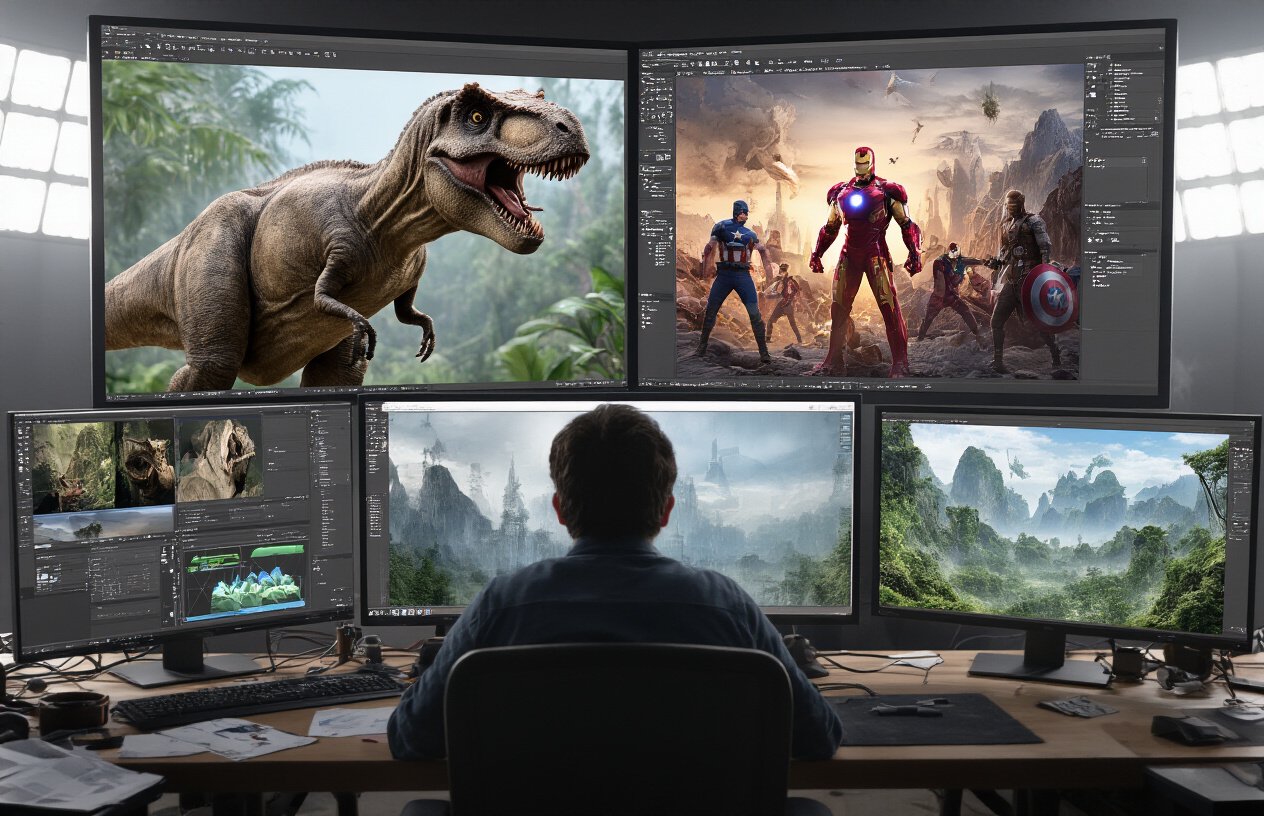
Iconic VFX Moments in Blockbuster Films
Remember that massive water tentacle in “The Abyss”? It was the first time we saw a fully CGI character with reflective properties. Mind-blowing stuff for 1989! This pioneering moment changed how filmmakers approached visual effects forever.
Then came “Jurassic Park” in 1993 with those jaw-dropping dinosaurs. What’s crazy is how well they still hold up today. Spielberg brilliantly combined practical animatronics with CGI, creating that perfect blend that made us all believe dinosaurs were back.
“The Matrix” bullet time sequence? Pure genius. The Wachowskis used 120 cameras in a circle to capture Neo dodging bullets in slow motion. This wasn’t just a cool effect; it became a cultural phenomenon that everyone tried to copy.
And who can forget the Battle of Helm’s Deep in “The Lord of the Rings: The Two Towers”? Thousands of Uruk-hai warriors fill the screen, all created with a clever combination of practical effects, miniatures, and a groundbreaking crowd simulation software called MASSIVE.
Before and After Comparisons
VFX isn’t magic, it’s hard work. Check out these transformations:
| Film | Before VFX | After VFX |
|---|---|---|
| Avatar | Actors in motion-capture suits on empty stages | Lush alien world of Pandora with 10-foot blue Na’vi |
| Gravity | Sandra Bullock and George Clooney in a studio with green screens | Breathtaking space environments with perfect zero-gravity movement |
| Mad Max: Fury Road | Real desert locations with practical vehicles | Enhanced landscapes, explosive effects, and that insane toxic storm |
What’s wild about “Mad Max: Fury Road” is how much was done practically. They shot real cars in real deserts, then enhanced everything digitally. The VFX didn’t replace reality. It amplified it.
Techniques Used in Award-Winning Visual Effects
The water in “Life of Pi” wasn’t just pretty, it was revolutionary. Rhythm & Hues developed custom fluid dynamics software to create the most realistic digital ocean ever seen. They even simulated individual water droplets on fur and skin.
Marvel’s “Thanos” in “Infinity War” took motion capture to another level. Josh Brolin wore a facial capture system with over 100 tracking points, allowing animators to transfer every subtle facial movement to the digital character.
“Blade Runner 2049” used an incredible technique for the character of Rachael. They digitally recreated the actress from the original film, then projected that digital model onto a stand-in actress. The result? A seamless blend of past and present that left audiences stunned.
“Interstellar” took scientific accuracy seriously with its black hole visualization. Physicist Kip Thorne provided equations that the VFX team at Double Negative used to create the most accurate depiction of a black hole ever shown in film. Their work was so groundbreaking that it led to scientific papers about black hole visualization.
Getting Started in VFX as a Hobby or Career
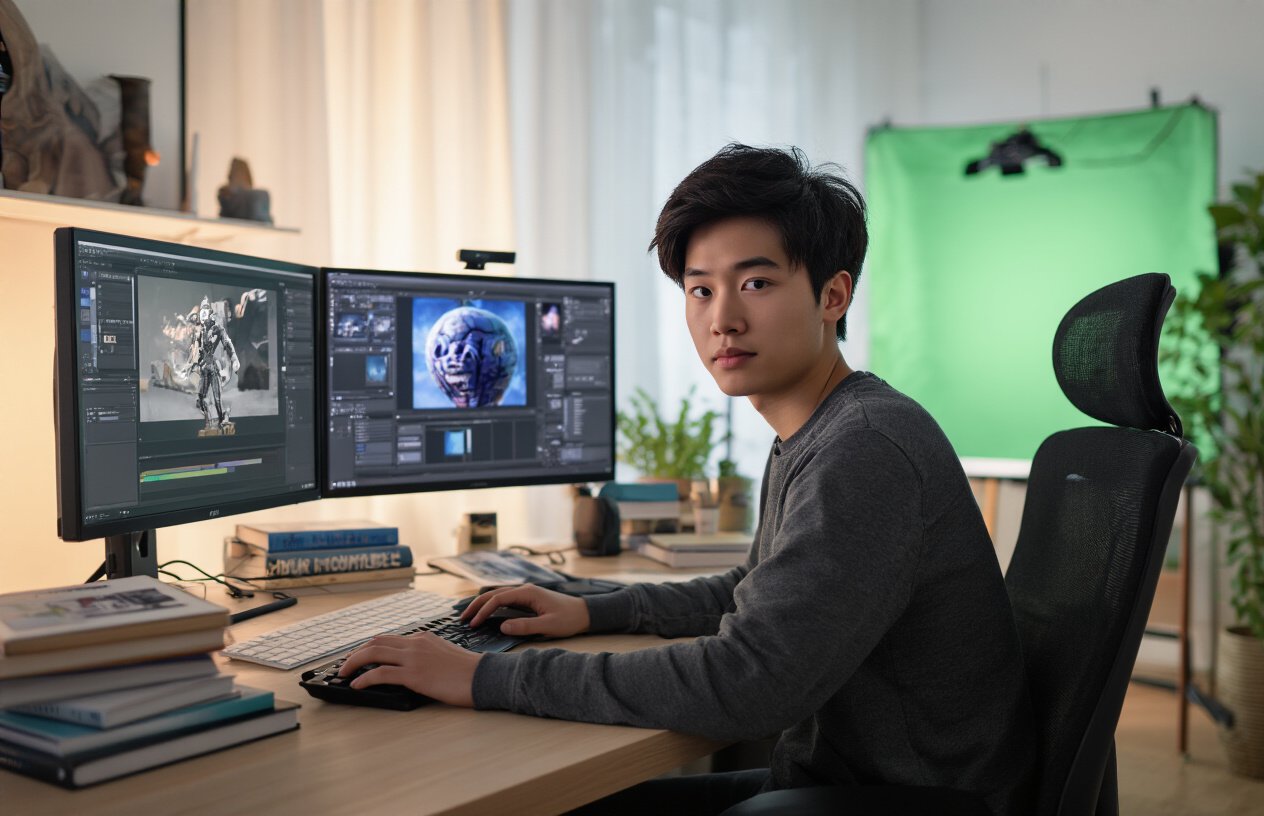
Learning Resources for Beginners
Getting into VFX might seem intimidating at first, but the internet is packed with resources that make learning way more accessible than ever before.
YouTube is your best friend when starting. Channels like Video Copilot, Corridor Crew, and Film Riot break down complex effects into digestible tutorials. What’s cool about these channels is that they often show before-and-after comparisons that help you understand what’s happening in each step.
Free software like Blender gives you professional-grade tools without spending a dime. Pair that with websites like Blender Guru or CG Cookie, and you’ve got a solid foundation to build on.
Want something more structured? Online courses from Udemy, LinkedIn Learning, and School of Motion offer comprehensive VFX training for under $100. If you’re serious, consider specialized platforms like fxphd or Gnomon Workshop; they’re pricier but taught by industry pros who’ve worked on blockbusters.
Building Your First VFX Demo Reel
Your demo reel is your VFX calling card. But here’s the thing: a 30-second reel with three amazing effects beats a 3-minute reel filled with mediocre work every time.
Start simple. Pick effects you can finish, like adding realistic fire to footage or removing objects from a scene. Focus on mastering one technique before moving to the next.
When assembling your reel:
- Keep it under 1 minute
- Put your best work first (and last)
- Only include work you’re proud of
- Show breakdowns of complex effects
- Use appropriate music that doesn’t overpower
Don’t worry about fancy title sequences. Studios want to see your skills, not your ability to create elaborate intros.
Online Communities and Forums for Support
The VFX journey can be frustrating without help. Luckily, online communities are filled with people who’ve faced the same challenges.
Reddit communities like r/vfx and r/AfterEffects are goldmines for feedback and advice. What makes these forums valuable is the mix of beginners and professionals. You’ll get honest critiques from people who know what they’re talking about.
Discord servers dedicated to VFX software have become popular meeting spots. The Blender, Houdini, and Nuke communities all have active channels where you can share work-in-progress and get real-time feedback.
Career Paths in the VFX Industry
The VFX world offers more career paths than most people realize. It’s not just about being a “VFX artist,” there are dozens of specialized roles.
Compositors combine various elements into final shots. Roto artists (yes, that’s a real job) meticulously trace objects frame-by-frame. FX artists focus on simulations like explosions and water. Lighting specialists make CG elements match real-world footage.
Starting salaries typically range from $40-60K, but senior artists at major studios can earn well into six figures. The catch? Competition is fierce, and many begin with internships or runner positions.
Geographic flexibility helps while Hollywood and London remain VFX hubs, studios in Canada, New Zealand, and India offer growing opportunities with potentially lower living costs.
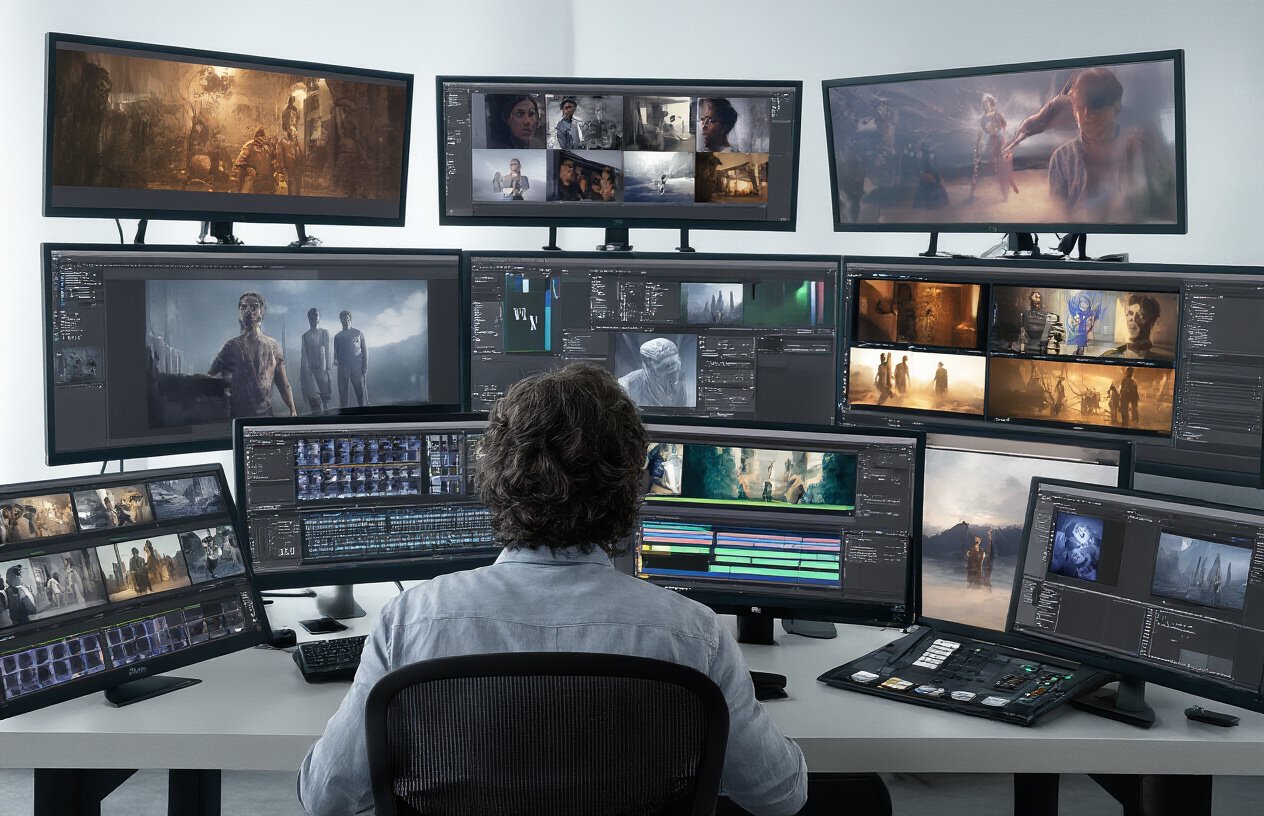
Visual effects have transformed the way stories are told on screen, taking us from the practical effects of early cinema to today’s photorealistic digital wonders. As we’ve explored, VFX encompasses a wide range of techniques from compositing and CGI to motion capture and simulation effects, all flowing through a structured production pipeline that turns imagination into reality. With accessible software options and a wealth of learning resources available, the world of visual effects is more approachable than ever for beginners.
Whether you’re looking to pursue VFX as a creative hobby or considering it as a career path, the journey begins with curiosity and practice. Start by experimenting with basic effects in user-friendly software, analyzing the work of professionals in your favorite films, and connecting with the vibrant online VFX community. The visual effects industry continues to evolve rapidly, creating endless opportunities for those willing to blend technical skill with artistic vision. Your next movie night might just be the beginning of seeing films in an entirely new light, understanding the magic behind the scenes that makes the impossible possible.


